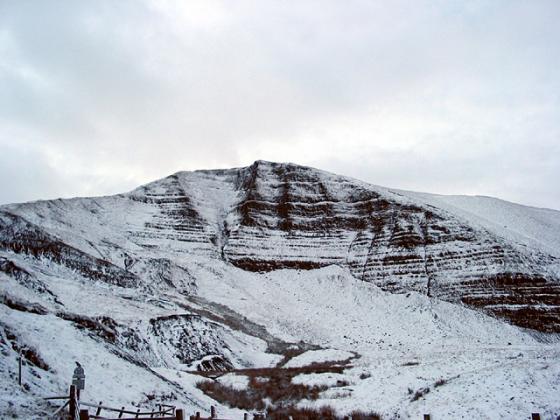
Newspaper clipping regarding the excavation of Gardom’s Edge settlement from the Sheffield Star, 29 May 1997, p6.

Newspaper clipping regarding the excavation of Gardom’s Edge settlement from the Sheffield Star, 29 May 1997, p6.

I really liked it here, there’s a lot going on.

Some of the stones are lost in the bracken.

Overgrown but substantial and impressive stonework.

Lots of vegetation up here at the end of june

Lots of vegetation up here at the end of june

Lots of vegetation up here at the end of june

possible entance to the enclosure








Beautiful Neolithic Enclosure walls

07/02
[visited 2/10/11] Well I know it’s just a big wall now and very hard to make out in places but I think this is my favourite monument on the edge. Carrying on past Three Men you eventually cross an obvious section of the wall arcing back towards you and going through the dry stone wall. Heading into the wood it’s initially hard to find amongst the bracken, but with a bit of effort you can trace it’s path.
When I heard about this place I immediately thought defence given how it it’s superficially similar in layout to some hill forts. But upon inspection I seriously doubt that was ever the aim of this place. It feels much more like one of the enclosures, causewayed or otherwise down south. Defensively the higher edge behind would make much more sense.
Access is varied. A relatively easy walk to the parts exposed on the edge. Bracken and tree fighting to the bits in the woods.
My impressions of the Gardoms Edge Enclosure reflect those of Davey.
Stu had told me about the enclosure and I expected to see the usual barely-visible humps and bumps in the fields. What I actually saw was a revelation. These walls were massive, truly megalithic, and wouldn’t have looked out of place on a medieval fortification
The huge stone-built enclosure walls have been severly robbed to provide stone for the modern dry stone walling but enough is left to give you some idea of the impression this enclosure would have made on any Neolithic visitors to Gardoms.
It makes you wonder why the modern stone masons bothered to take down the enclosure walls to build the dry stone wall. The original wall would have served the same purpose.
When you think of neolithic enclosures, you often think about hardly evident earthworks in a long cultivated field. This one, however is massive in terms of its embankments of large boulders. Most of the southern end of the birch wood is enclosed and the enclosure extends accross the next two southerly fields. In the northern of these fields, the embankments have been cleared out of the field.
Dave 26th March 2004
A massive enclosure wall 1.5m high in places with around 7 entrances, along its 500m length. It was called ‘Megs Walls’ when first discovered after moorland fires, around 60 years ago.
The enclosure has been dated to the neolithic and was later overlaid with bronze and iron age cairns, boundaries and field systems.
After many years of excavation the site is now thought of as a neolithic trade centre. And the enclosure was not built for either occupational or defensive purposes. Stone axes and numerous flint tools have been found, the flint is thought to be from the Yorks and Lincs Wolds.
J.Barnatt also suggests the site could have been used for excarnation of the dead and ritual feasting, with the site being used seasonly.
“The story was that ‘Meg’ the witch or fortuneteller, was driven out of the village and lived near this wall, or near the Nelson Monument, and that the wall was named after her. But ‘Meg’ is probably one of the usual excuses offered in clerical-medieval days to explain away the credit for remarkable works made by primitive, or pagan, man...........’Meg’ however, is also Greek for big, or great, i.e megalith for big stone.
From the ‘Sheffield Clarion Ramblers’ 1942-3 by G.H.B Ward.
“There is a large enclosure on Gardom’s Edge above Baslow. This has recently been recognised as being Neolithic in date, possibly built between 3500 and 3000BC. It is a rare upland equivalent to the causewayed enclosures found in the lowlands or southern England. The Gardoms Edge enclosure has a massive bank built of boulders, in its collapsed and robbed state 5-9m wide and 1-1.5m high, with entrances spaced along it. It defines the eastern side of a large area at the crest of the ridge, the western side being a precipitous scarp overlooking the Derwent Valley. The interior is largely boulder strewn and unsuitable for settlement, although there are a few places where buildings have been erected.” PEak District – John Barnatt and Ken Smith


















































































































































































































































